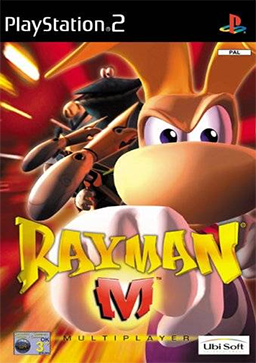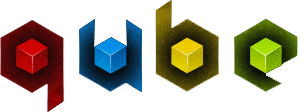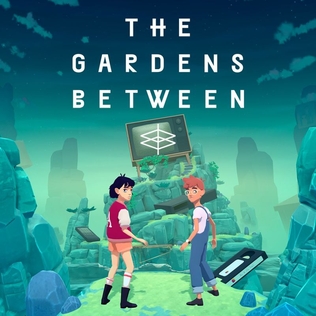Hitman is a stealth video game franchise created by IO Interactive. In each installment, players assume the role of a cloned contract killer named Agent 47, who travels around the world to assassinate various targets that are assigned to him by the fictional International Contract Agency (ICA). Gameplay focuses on freedom of approach, with most levels placing the player in a large sandbox location where they have free rein to explore and find different ways to reach and eliminate their targets. Stealth is a major component of the gameplay and players are given various tools to accomplish their objectives, such as suppressed weaponry and the ability to take disguises, which allow 47 to blend in with non-player characters (NPCs) and bypass most restricted areas undetected.

Rayman M is a multiplayer party game developed and published by Ubi Soft. The game encompasses two versions: the original version for the PlayStation 2 and Microsoft Windows, and the North American GameCube and Xbox versions, with each release featuring exclusive content. A spin-off of the Rayman series, the game retains a number of elements that previously appeared in Rayman 2: The Great Escape, such as similar controls, gameplay and level design. It is split into two game modes, both supporting up to four players: on-foot racing and arena-based battles.

Call of Cthulhu: Dark Corners of the Earth is a survival horror video game developed by British studio Headfirst Productions for the Xbox in 2005 and for Microsoft Windows in 2006. It combines an action-adventure game with a relatively realistic first-person shooter and elements of a stealth game.

Bionicle is a 2003 platform video game developed by Argonaut Games and published by Electronic Arts and Lego Interactive for GameCube, PlayStation 2, Xbox, and Microsoft Windows. A port was released for Mac OS X, and a version was also developed for the Game Boy Advance. In the home console version, the player controls the Toa, elementally-powered warriors, as they traverse through levels; some levels are 3D platformers, while others utilize mechanics like snowboarding or lava surfing. The game's story, which takes creative liberties with the official Bionicle story, follows the Toa as they defend the island of Mata Nui from the return of the evil Makuta and his minions.

Madagascar is a platform video game based on the animated film of the same name by Eric Darnell and Tom McGrath, produced by DreamWorks. The game was released on May 24, 2005 in North America and on June 30, 2005 in Europe. The GameCube, PlayStation 2 and Xbox versions were developed by Toys for Bob. The Microsoft Windows version was developed by Beenox and the Nintendo DS and Game Boy Advance versions were developed by Vicarious Visions. All versions of the game were published by Activision. Madagascar: Operation Penguin was the next Madagascar video game to be released on the Game Boy Advance.

Mr. Driller Drill Land is a 2002 puzzle video game developed and published in Japan by Namco for the GameCube. It is the fifth entry in the Mr. Driller video game series, and the second developed for a Nintendo platform following Mr. Driller A. Controlling one of seven characters, the player must make it to the bottom of each stage by destroying colored blocks, which can connect to each other and form chain reactions. The game is divided into five different modes themed as amusement park attractions, which feature new mechanics such as enemies, items and different block types.

Sherlock Holmes: The Awakened is an adventure video game developed by Frogwares and published in 2007 for Microsoft Windows. The game follows an original plotline as Sherlock Holmes and his companion Dr. John H. Watson investigate a series of strange disappearances related to the Cthulhu Mythos.

Frogwares is a Ukrainian video game development studio headquartered in Kyiv with subsidiary offices in Dublin, Ireland. The studio and its subsidiaries develop adventure games for PlayStation 4, Xbox One, Microsoft Windows, Nintendo Switch as well as PlayStation 3, Xbox 360, Nintendo DS, Nintendo 3DS, Wii, and mobile.

Sherlock Holmes is a series of adventure games developed by Frogwares. The games are based on Arthur Conan Doyle's Sherlock Holmes stories, featuring the detective Sherlock Holmes and his companion Dr. John H. Watson. While the franchise is based on Doyle's stories, each game has an original plot and storyline.

Braid is a puzzle-platform video game developed by Number None and considered an indie title. The game was originally released in August 2008 for the Xbox 360's Xbox Live Arcade service. Ports were developed and released for Microsoft Windows in April 2009, Mac OS X in May 2009, PlayStation 3 in November 2009, and Linux in December 2010. Jonathan Blow designed the game as a personal critique of contemporary trends in video game development. He self-funded the three-year project, working with webcomic artist David Hellman to develop the artwork. An anniversary version is planned for release for PlayStation 4, PlayStation 5, Xbox One, Xbox Series X/S, Nintendo Switch, Windows, Mac, and Linux with updated graphics and developer commentary.

The Adventures of Shuggy is a puzzle-platform game developed by British studio Smudged Cat Games and published by Valcon Games. It was released June 15, 2011 for the Xbox 360 via Xbox Live Arcade, for Microsoft Windows on June 13, 2012, and for Linux and OS X on October 30, 2015. It follows the vampire Shuggy as he seeks to rid his newly inherited mansion of its undesirable inhabitants.

The Testament of Sherlock Holmes is an adventure video game in the Sherlock Holmes series developed by Frogwares and distributed by Focus Home Interactive. After being delayed from an original 2010 release, the game was released in Europe and North America in September 2012.

Q.U.B.E. is a physics-based puzzle video game developed and published by Toxic Games, with help from Indie Fund, a group of independent game developers. The game, an expansion of a student project by the founding members of Toxic Games, was released for Microsoft Windows through a number of digital distribution platforms, first through Desura on 17 December 2011 and then through Steam on 6 January 2012. An OS X port was later released on 17 December 2012 through Steam and on 18 December 2012 through Desura.

Sherlock Holmes: Crimes & Punishments is an adventure mystery video game in the Sherlock Holmes series developed by Frogwares in 2014 and distributed by Focus Home Interactive from 2014 to 2019 for Microsoft Windows, PlayStation 3, PlayStation 4, Xbox 360, and Xbox One. Frogwares regained the publishing rights to the title on Steam and the game reappeared on other platforms in the start of 2020. A Nintendo Switch version was released on February 3, 2022.

Kameo: Elements of Power is a 2005 action-adventure video game developed by Rare and published by Microsoft Game Studios. The player controls Kameo, a 16-year-old elf, who must travel across the land, rescuing her family while collecting Elemental Sprites and Warriors in a Beat 'Em Up style combat against the trolls that stand in her way. Kameo's ten elemental powers let her transform into creatures and use their varied abilities to solve combat-oriented puzzles and progress through the game's levels.

Sherlock Holmes: The Devil's Daughter is an adventure mystery video game in the Sherlock Holmes series developed by Frogwares for Microsoft Windows, PlayStation 4 and Xbox One in 2016. It was released for the Xbox One and PlayStation 4 on 25 October, while the PC version was released earlier on June 10.

Call of Cthulhu is a role-playing survival horror video game developed by Cyanide and published by Focus Home Interactive for Microsoft Windows, PlayStation 4, Xbox One and Nintendo Switch. The game features a semi-open world environment and incorporates themes of Lovecraftian and psychological horror into a story which includes elements of investigation and stealth. It is inspired by H. P. Lovecraft's short story "The Call of Cthulhu", while also being an adaptation of the 1981 role-playing game of the same title.

Snake Pass is a puzzle-platform game developed and published by Sumo Digital for Nintendo Switch, PlayStation 4, Windows, and Xbox One. Players play as a snake traversing floating islands in themed levels. Despite being a platform game, the player cannot jump and has to move similar to a real snake. The game was released in North America, Europe, and Australia in March 2017.

The Sinking City is an action-adventure game developed by Frogwares and inspired by the works of horror fiction author H. P. Lovecraft. Set in the fictional city of Oakmont, Massachusetts during the 1920s, the story follows private investigator and war veteran Charles W. Reed as he searches for clues to the cause of the terrifying visions plaguing him, and becomes embroiled in the mystery of Oakmont's unrelenting flooding.

The Gardens Between is an adventure/puzzle video game developed by Australian studio The Voxel Agents and published in September 2018 for Windows, macOS, Linux, Nintendo Switch, and PlayStation 4. It was later released for Xbox One in 2018, iOS in 2019, Android in 2020, and PlayStation 5 in 2022. The game, which conveys its story through visuals and gameplay rather than dialogue or narration, follows two children, Arina and Frendt, in the treehouse in a garden between their houses. In a dreamscape, they progress through sets of island levels, each representing different shared experiences. The characters walk along a path that winds through each level, and the player solves environment-based puzzles that prevent the pair from reaching and activating a portal at the end of the path. To do so, the player controls the flow of time forwards and backwards and causes the characters to interact with nearby objects and spheres of light, rather than moving the pair directly.




















